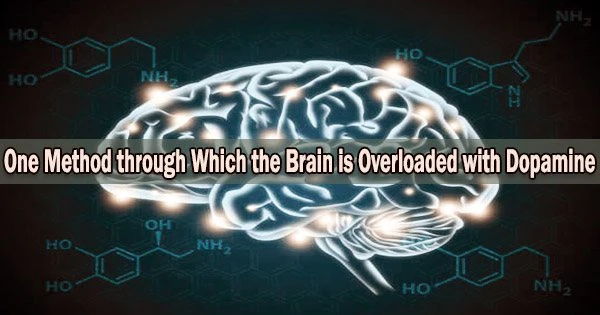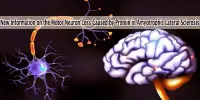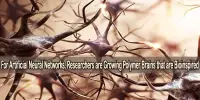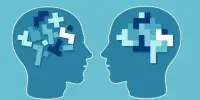Researchers have been attempting to determine why schizophrenia is connected to excessive dopamine levels in the brain since the 1950s. The dopamine hypothesis of schizophrenia proposes that individuals with this brain disorder have dysregulated dopamine flow along multiple routes, which causes an overabundance of this neurotransmitter to flood the brain.
Dopamine pathways’ role in the pathophysiology of schizophrenia and psychosis is well-established. However, scientists are still working to determine precisely how and why dopamine circuits get overloaded with the chemical.
D2-Autoreceptors Slow the Flow of Dopamine Along Specific Pathways
There are four major dopamine pathways in the human brain. The nigrostriatal and mesolimbic dopamine systems, which are important for motivation, reward-seeking behavior, motor control, and addiction, are the two dopaminergic routes that pass via the caudate nucleus region of the striatum of the basal ganglia.
A group of inhibitory dopamine receptors known as D2-autoreceptors regulates striatal dopamine release in the caudate nucleus. When these autoreceptors function properly, they maintain a “Goldilocks zone” of just enough dopamine but not too much.
These presynaptic autoreceptors function as gatekeepers that slow the flow of dopamine in healthy individuals who are not exhibiting schizophrenia or psychotic symptoms. However, if autoreceptors are damaged and unable to control how much dopamine is produced from presynaptic dopaminergic neurons, the brain becomes overstimulated.
A dynamic equilibrium between dopamine release and reuptake via dopaminergic pathways that travel to other parts of the brain is ideally maintained by autoreceptors in the caudate nucleus. Antipsychotic drugs enhance autoreceptors’ capacity to suppress dopamine production and release, preventing the flood of the brain.
Until now, scientists have been unable to decipher whether the dopamine link was a causative factor or solely a way to treat schizophrenia. We have the first evidence that dopamine is a causative factor in schizophrenia.
Daniel Weinberger
Unknown are the precise chemical mechanisms that enable D2-autoreceptors to restrict dopamine release as well as how antipsychotics increase autoreceptors’ capacity to control dopamine flow. However, ground-breaking post-mortem brain research illuminates how genetic factors may change the caudate nucleus’s autoreceptors’ capacity to limit the flow of dopamine.
A Vexing Riddle: What’s the Link Between Dopamine and Schizophrenia?
A new study (Benjamin et al., 2022) on the dopamine hypothesis of schizophrenia by researchers at the Lieber Institute for Brain Development (LIBD) gives us fresh clues about how gene expression in the caudate nucleus may affect autoreceptors’ ability to inhibit the flow of dopamine in people with schizophrenia.
The findings of this recent post-mortem analysis of the genetic and transcriptional landscape of the striatum’s caudate nucleus in 443 people (245 neurotypical individuals, 154 with schizophrenia, 44 with bipolar disorder) were published on November 1 in the peer-reviewed journal Nature Neuroscience.
“Most studies of gene expression in the brains of individuals with schizophrenia have focused on cortical regions, but subcortical nuclei such as the striatum are prominently implicated in the disease, and current antipsychotic drugs target the striatum’s dense dopaminergic innervation,” the authors explain.
The researchers note that they “identified many genes associated with schizophrenia risk” and found that antipsychotic medications have an “extensive influence on caudate gene expression.”
The LIBD researchers identified specific genetic mechanisms that disrupt D2-autoreceptors’ ability to regulate dopamine flow in individuals with schizophrenia. “If autoreceptors are compromised, the flow of dopamine within the brain is poorly controlled, and too much dopamine flows for too long,” Benjamin et al. explain.
“Until now, scientists have been unable to decipher whether the dopamine link was a causative factor or solely a way to treat schizophrenia,” senior author Daniel Weinberger said in a November 2022 news release. “We have the first evidence that dopamine is a causative factor in schizophrenia.”
“One of the major side effects of the drugs used to treat schizophrenia is lack of pleasure and joy,” co-author Jennifer Erwin added. “In theory, if we could target the dopamine receptor specifically with drugs, that could be a new strategy for treatment that would not limit a patient’s joy as much.”
Antipsychotic medications aid individuals with schizophrenia by lowering dopamine levels in the brain, according to Solomon Snyder, a neuroscientist at Johns Hopkins University School of Medicine, who discovered this in 1976. In a November 2022 statement, Snyder, who wasn’t involved in Benjamin et al.’s recent study, hailed the latest LIBD findings as a “breakthrough many decades in the making.”
“For decades, people have debated the dopamine connection to schizophrenia,” Snyder said. “They used to say, ‘Well, this is interesting to speculate about, but there’s no solid evidence.’ But now that we have much more rigorous data available, we keep coming back to the same story. You don’t have to call it a hypothesis anymore.”
Autoreceptors in the Caudate Nucleus Could Be a New Therapeutic Target
The most recent (2022) work by Benjamin et al. sheds new light on the genetic pathways that interfere with the caudate nucleus’s D2-autoreceptors’ capacity to block dopamine flow. Finding the crucial function of these autoreceptors in protecting the brain from becoming overloaded with dopamine may help identify novel targets for psychopharmacology in the caudate nucleus.
















